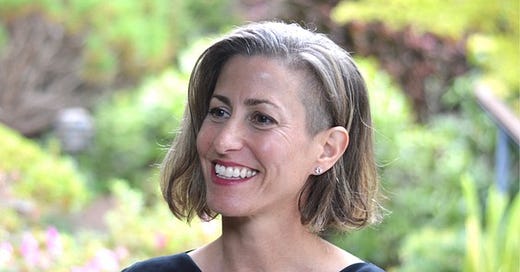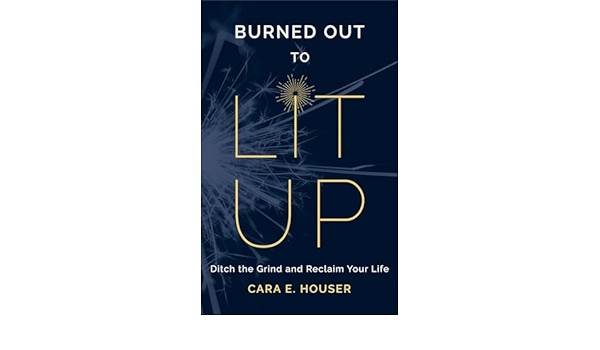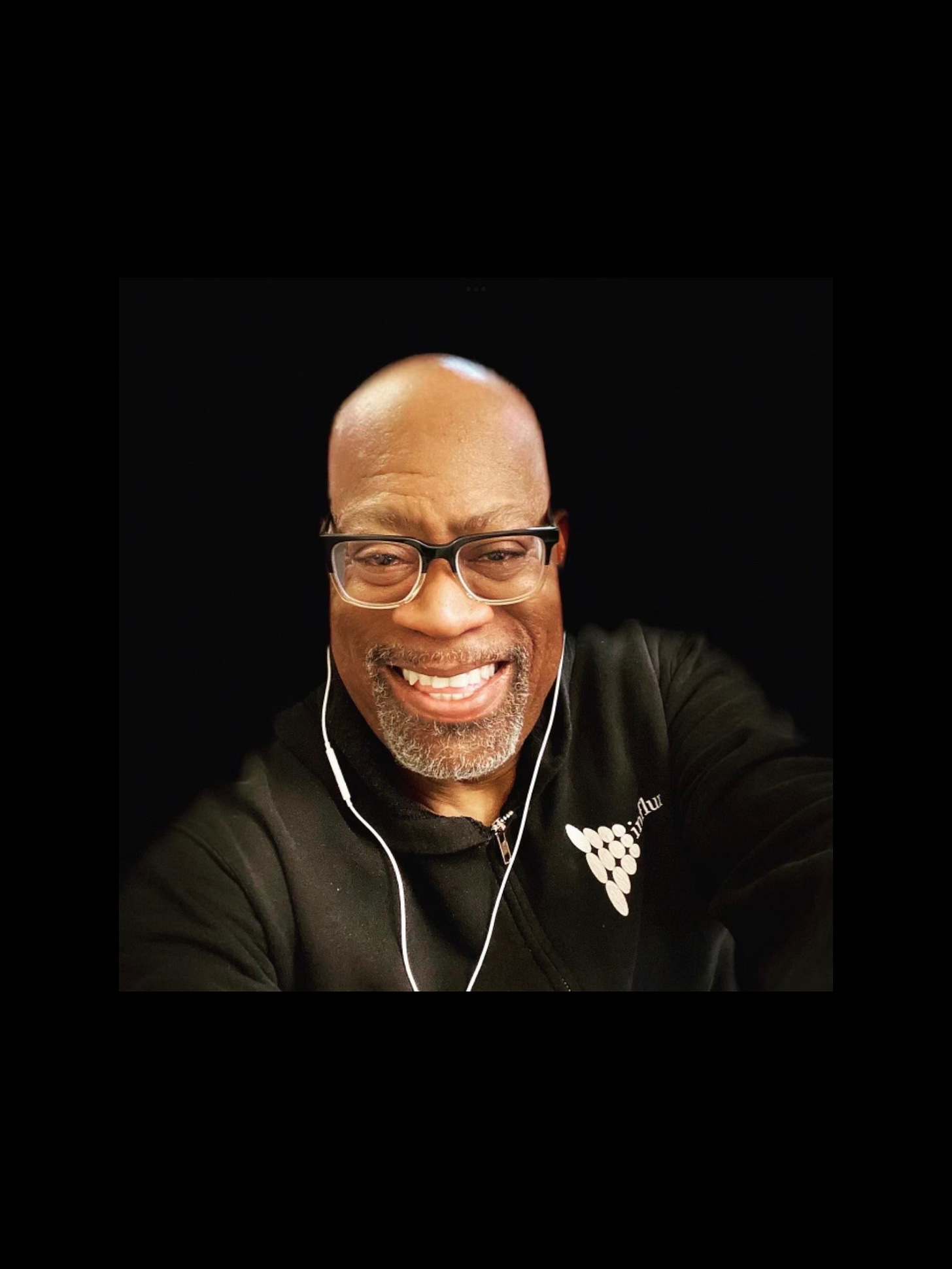One Woman’s Eye-Opening Journey To Overcoming Burnout
Feature Interview With Career Strategist and Author Cara Houser
Cara Houser spent 20 years immersed in the ultra-male, testosterone filled world of real estate development. She describes it as a “24/7 always on” business, one where it’s a badge of honor to be so busy that one’s other life priorities get neglected.
During that period, her teams produced over 3,000 homes in the San Francisco Bay Area, yielding over $1.5B in value. Her thinking at the time was….
…. if you can develop housing in the Bay Area, you can smash just about any hurdle in your path.
After enduring on this soul-breaking journey for 15 years, a trapeze act of bone crushing work combined with the obligatory set of things working parents are “supposed” to do, she hit a wall.Recounting this experience she adds
“I remember sobbing at our friends’ home one day after a scary ambulance visit to the hospital for my son the night before. I had no idea how I got so burned out and even less of a clue how to come back to life. So my friend suggested a sabbatical as a place to start.”
With this suggestion she began experiencing waves of doubt about whether she “deserved” a more reasonable life without having to seek permission from others. And of course, like howling jackals, many folks loudly (and uninvitedly!) voiced their fears and warnings about the demise of my career. But deep inside, Cara said she knew that her mental and physical state at the time demanded a reset.
So setting all of the pushback aside, she forged ahead with plans to reclaim her life.
Reflecting on this period of time, she adds:
“We saved like crazy, cut expenses drastically, and I took a mid-career break, spending the next 1.5 years learning as much as possible about how to ditch the crushing weight of external expectations and build a healthy foundation based on openness to possibility, restoring my core self, and doing more of what lights me up.”
Over time, she discovered that the more inner nourishment she gave herself, the more she had to give to others. And then there’s this sidebar…
“….I also learned that playing your first instrument after 40 is a slow road, but who cares - being horrible at first builds character!”
Eventually she got her mojo back, with plenty of motivation to return to the world of work. But this time, with her life perspectives having shifted, she rebuilt her career with far more autonomy and purpose.
“Learning that I had the power to set my own rules of engagement with the world was a watershed moment. I just had to learn how to use it.”
Today Cara is a career strategist and empowerment coach who aims to support women leaders ditch the grind and reclaim their lives. Informed by her own roadmap to transformation, she assist her clients in tapping into their own innate power, possibility, and purpose. As she puts it in her own words…
“They hone their ability to see (and articulate) their value and use their power to get what they want in work and life. F*ck off hustle culture. Hello rich, full-bodied, joy-filled life.”
She has also written a playbook on recovering from burnout entitled Burned Out to Lit Up: Ditch the Grind and Reclaim Your Life. On the eve of the book’s October 24th release, I had the opportunity to interview Cara about her transformative journey and how she’s now assisting clients in setting a new course for their lives.
What was the major impetus behind your decision to write this book?
A significant theme in my coaching work is helping people break out of the clutches of hustle culture, define success for themselves, and then craft their lifestyles around what matters most to them. And a huge driver of our current epidemic levels of burnout is the prevalence of the grind as a standard and accepted way of being in the world.
How does your own experience with burnout inform the message of your book?
Like many women, especially full-time working parents and caregivers, I slid down the long slippery slope of being everything to everyone—except myself. One choice at a time, I betrayed myself and my own needs in favor of trying to do multiple full-time jobs in the time (and for the price) of one.
Until one day I realized I had become a dried-up raisin of the robust, energetic, creative, fun person I once was. I was so fried that I had no idea how to even begin to claw my way out and not an ounce of energy to figure it out. Even looking for the resources to help myself out of this hole seemed impossible. I ended up in such a bad place that I needed to take a leave from work for the sake of my physical and mental health, embarking on what would become a nearly two-year hiatus (later known as my sabbatical).
So what did you discover about yourself during this downtime?
I learned about burnout recovery the hard way during my own healing process. I test-drove resources, books, classes, and practices, and this book is the distillation of the greatest hits so readers can get down to the restorative business of their own recovery. With specific and tested guidance, compelling stories, and applied, practical wisdom, I guide them from soul-crushing burnout, through self-care, all the way to the magic of self-possession.
I learned a lot while writing this book! This effort is intense and requires discipline, focus, and support from your loved ones, editors, and launch team. I’m so grateful for everyone in my circle who has supported me and helped this dream become a reality.
You say that burnout, amid the constant juggling of personal and professional demands is a modern epidemic among women. Can you share a bit more about your thoughts here?
A 2018 Deloitte study found that 77% of Americans reported experiencing burnout within the previous year and by 2023, a study by Zippia reported that number had risen to 89%.
The World Health Organization, Mayo Clinic and other health organizations also acknowledge burnout as a widespread problem, although they vary on defining it and are somewhat vague on dealing with it.
I’m willing to bet that among mid-career women, who have been hacking their way through American work culture for a while, the percentage is higher, ensnaring nearly everyone, and that they are experiencing all the wonderful things that accompany burnout— feeling overwhelmed, undervalued, maybe even trapped, and lost as to what to do about it.
Like I did, I’ll bet they’ve spent more time than they care to count trying to be everything to everyone (family, friends, the neighbor down the street, their boss, culture, church, community) with little regard to their needs or identity.
Can you speak for a minute about this whole concept of work/life balance that was popularized in the 80s and 90s?
I’ve actually come to loathe the notion of work-life balance as it has become a torture chamber for people trying in vain to get that “balance right,” as though the elusive state is but one book, meditation, or massage away. It’s a lose-lose scenario, and it subconsciously elevates one of life’s activities (work) above all others. Sadly, it’s perfectly fitting in America, where most folks do put work above health, family, fun, everything (and are shamed or made to feel like lazy bums if they don’t).
You may have heard this elsewhere or concluded it on your own, but there’s no way to get that work-life balance “right” between societal demands and career. It’s a trap to even think balance is possible by being even more efficient, sacrificing even more of ourselves and our basic human needs. This sacrifice is a recipe for so much stress and pain. Work-life balance is a con, and we must reject it in order to reclaim our inner power and our lives—body, mind, and spirit.
So knowing this, how did you begin to approach things differently in your own life?
For me, this (work/life) realization was astonishingly liberating. It allowed me to rebuild my life without the pressure and shame of feeling like a failure so I could choose my priorities consciously, set boundaries, and show up more freely, authentically, and joyfully in all realms of life. It is why I now refer to this lovely balancing act as life-work balance, a simple reordering that makes all the difference.
Can you elaborate a bit more on this last point?
Sure. I’ve learned that the way to power, possibility, and purpose lies in crafting a lifestyle meant for actual human living and thriving, one where life comes before work and work is simply one of many elements of a rich and full life.
When ordered properly, both your life and work are so much better for it. When I’m centered and fulfilled in my multidimensional life, my work is more creative and higher quality, and I show up with the humanity needed to connect with others and lead high performing teams where people are seen and contribute their best. And I’m so much more relaxed and fulfilled in my personal life, showing up with more patience and care for those most important to me. What a win-win.
How does one really know that they have burnout? What are some of the major signs and indicators?
Burnout is not a sign of doing things wrong. It is a sign of hustling and grinding so freaking hard to do everything “right” and still feeling like a failure. The overwhelming stress and exhaustion run so deep that it’s hard to imagine ever getting enough rest to come back to life.
Burnout creates disconnection—from ourselves, our needs, our interests, and our relationships with others that matter most in our lives. Here’s a depressing look at what burnout looks like:
Sleeping like crap and developing permanent dark eye bags, creaky joints, and the bone-deep exhaustion it seems like only death can relieve.
Spending little-to-no time nurturing relationships outside your immediate household (and not feeling like you’re crushing those either at times).
Eating only things that take a max of 10-15 minutes to whip up.
Declining to do most things that seem frivolous or like a waste of time (i.e. fun).
Dragging your ragged self into work less and less confident of your ability to do anything well. After all, no one is particularly pleased with your “half-assed” performance.
Snapping at people and immediately feeling bad about yourself for having an emotion.
Quitting healthy and/or relaxing habits—like swimming, crafting, reading the Sunday paper, hiking in nature, journaling, practicing mindfulness, having a spiritual practice, reading anything not related to work or child rearing—since you “don’t have time” for you.
Tolerating the thoughts, actions, habits, people, and places that constantly drain your will to live, thinking that good, loving people like you should put up with crap as an act of loyalty and commitment.
Forgetting you ever wanted to pursue anything else, like learning another language or guitar, making pottery, starting a band, or traveling more.
Collapsing into a heap at night and looking forward to sleep like it’s the greatest part of your day.
Secretly hoping you’ll develop a serious medical condition that requires hospitalization so you can escape it all.
What sorts of lessons do you share in the book about your own experiences of recovery and renewal?
I learned the more I nourished myself inside and out, the more I had to give to my family, my work, and the world—and the opposite is also true. I learned how to ditch the weight of external expectations and build a healthy foundation based on openness to possibility, restoring my core self, and doing more of what lights me up with the people and things that matter most. I reclaimed my life, and I guide readers through the playbook of how they can do it too.
The book guides readers step-by-step through recognizing burnout in themselves; making space in their overbooked lives by decluttering their space, mind, and schedule; rebuilding healthy mindsets, habits, and practices; and sustaining their transformation for the long term through resilience and joy.
Describe your greatest hopes in terms of what readers walk away with from reading your book?
As readers recover from their burnout, they will find themselves called to take different pathways based on their unique needs, goals, and dreams. Some will set boundaries and make adjustments in their current roles.
Others will move to four-day work weeks or to new roles in companies that value their effort and have healthy work cultures. Some will start their own consulting or other types of businesses. And some will take extended time away from work to allow for travel, time with family, a personal project, or a more in-depth exploration of possibilities for their next chapter.
It’s my mission to help people step into their own self-possessed power, to go from burned out to lit up in their lives and careers, and to reclaim their lives. It’s why I created a program called “Sabbatical in a Box,” a fully resourced course to serve people recovering from burnout. And it is what inspired this book.
A friend of mine calls it “structured healing” since it gently guides people through the process of restoring themselves and cultivating a sabbatical-style mindset and way of being. It comes complete with a literal box filled with all the materials and delights they need to support the journey. Readers can find out more about this and my 1:1 and group coaching services, speaking and workshops on my website.
I hope that no matter what they do next, readers incorporate the mindsets, habits, and practices they learn into their lives for the long term. And that they use these tools to stop striving, start thriving, and cultivate a life aligned with what matters most, one nourishing choice at a time.
I wish them vibrant well-being inside and out, a deeper connection with their inner knowing and wellspring of ideas and energy, and a renewed sense of joy and empowerment. The world needs their spark, and now is their time to shine!
To learn more about Cara Houser, visit her website HERE.







It was such a pleasure to be featured here!